IOWA CITY — Art can transform lives, inform opinions, shock the system, or relax it. But not everyone has the time or resources to visit galleries and exhibits and halls. Which makes public art — works displayed in a public domain — so important and impactful.
“Art has the ability to bring people together to discuss important issues, and I’ve always been drawn to community-based art because I feel it can really get people’s attention,” artist Sydney Pursel told The Gazette. “If you’re encouraged to participate because it’s in your community, it will stick with people a little more. Those experiences really stick with people.”
Pursel is among the community- and public-art focused professionals scheduled to participate in the University of Iowa Grant Wood Art Colony’s Sixth Bienniel Grant Wood Symposium, “Art in Public,” on Sept. 29.
The free, all-day event at UI Art Building West aims to explore the role art plays in community building and economic development — along with artist and community responsibilities, according to organizers.
Speakers who’ve “experienced success in public art initiatives” — including artists, scholars, attorneys, architects, and community planners — will give TED-style talks about specific projects and big-picture topics.
Public artist Rick Lowe, behind a Project Row Houses art project in Houston, will give the keynote address, highlighting his work uniting artists around the intention to restore a block-plus of “derelict shotgun houses,” transforming them into showpieces that double as community centerpieces via neighborhood arts and support venues.
Pursel will take over at lunch for a mealtime event merging art with history and — of course — food. “The Feast,” as she calls it, invites attendees to pick plates she’s hand-stippled or wood-burned with different Native American seals or flags, along with place mats telling those tribes’ stories.
While dining on indigenous food — including wild rice, buffalo jerky and locally-sourced honey — participants will learn about the land’s ancestors, including food politics, assimilation, language loss, and appropriation.
Emptied plates, albeit with food scraps and stains, will serve as a lasting artistic symbol of a meal shared, according to Pursel, a member of the Ioway Tribe of Kansas and Nebraska and a graduate student at the University of Kansas. She’s also led art-centered social interventions, projects involving public murals, and pop-up exhibits.
“I try to make all of my art community-based,” she said. “And I’m excited to meet artists who are doing the same things.”
The “Art in Public” symposium aligns with the legacy of Grant Wood, who headed the Public Works of Art Program as part of the New Deal in 1934, according to UI officials. The UI artist and native Iowan completed several mural and encouraged community members toward public art as well.
Other speakers include:
l Mindy Vink, public art program manager in Boulder, Colo., who will discuss Boulder’s journey reinventing its public art program;
l Sculptor Desmond Lewis, who helped make devalued Memphis communities more visually pleasing through low-budget sculptures;
l University of Northern Iowa’s Public Art Incubator directors Dan Perry and Tom Stancliffe, who run a program offering technical resources and fabrication assistance to regional and national artists.
If you go:
When: 9 a.m. to 4 p.m. Sept. 29
Where: University of Iowa Art Building West, 141 N. Riverside Dr., Iowa City
Who: The symposium is free and open to the public. Registration is not required, but attendees are encouraged to do so at https://grantwood.uiowa.edu/2018-grant-wood-symposium.
